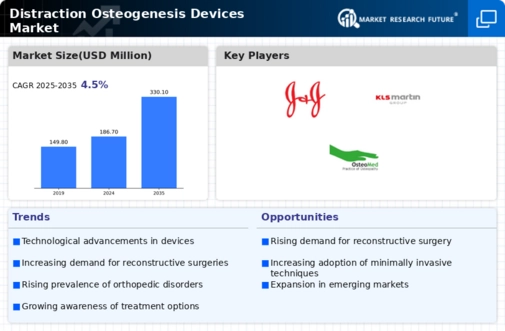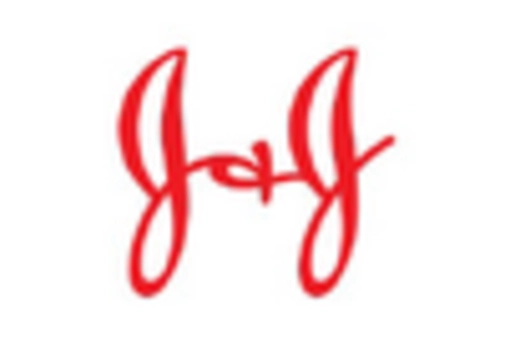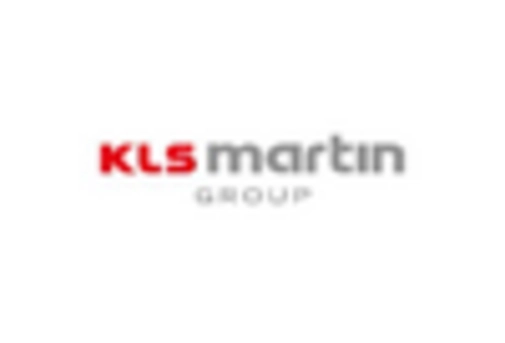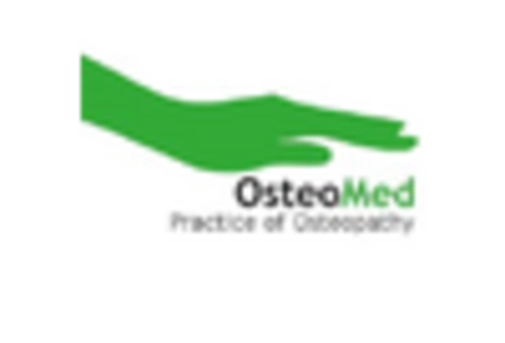-
Definition
-
Scope of the Study
- Research
- Assumptions
- Limitations
-
Introduction
-
Primary Research
-
Secondary
-
Market Size Estimation
-
Restraints
-
Opportunities
-
Challenges
-
Technology Trends & Assessment
-
Market Factor Analysis
-
Porter’s Five Forces Analysis
- Bargaining Power of Buyers
- Threat of Substitutes
- Intensity of
-
5.1.1
-
Bargaining Power of Suppliers
-
5.1.3
-
Threat of New Entrants
-
Rivalry
-
Value Chain Analysis
-
Investment Feasibility Analysis
-
Pricing Analysis
-
Chapter 6. Global Distraction Osteogenesis Devices
-
Market, by Device Type
-
Introduction
-
Mandibular Distraction Devices
-
Market Estimates & Forecast, by Region, 2023-2032
-
Market Estimates &
-
Forecast, by Country, 2023-2032
-
Palatal Distraction Devices
-
Market
-
Estimates & Forecast, by Region, 2023-2032
-
Market Estimates & Forecast,
-
by Country, 2023-2032
-
Alveolar Distraction Devices
-
Market Estimates
-
& Forecast, by Region, 2023-2032
-
Market Estimates & Forecast, by Country,
-
Craniofacial Distraction Devices
- Internal Distractors
-
Market Estimates & Forecast, by Region,
-
Market Estimates & Forecast, by Country, 2023-2032
-
6.5.1.2
-
Bone-Borne Distractors
-
Market Estimates & Forecast, by Region, 2023-2032
-
Market Estimates & Forecast, by Country, 2023-2032
-
Hybrid Distractors
-
Market Estimates & Forecast, by Region, 2023-2032
-
Market Estimates &
-
Forecast, by Country, 2023-2032
-
Distractors
-
External Distractors
-
Unidirectional
-
Market Estimates & Forecast, by Region, 2023-2032
-
Market
-
Estimates & Forecast, by Country, 2023-2032
-
Bidirectional Distractors
-
Market Estimates & Forecast, by Region, 2023-2032
-
Market Estimates &
-
Forecast, by Country, 2023-2032
-
Market
-
Estimates & Forecast, by Region, 2023-2032
-
Market Estimates & Forecast,
-
by Country, 2023-2032
-
Market Estimates
-
& Forecast, by Region, 2023-2032
-
Multiplanar Distractors
-
LeFort Distraction Devices
-
Market Estimates & Forecast, by Country,
-
Small Bone Distraction Devices
-
Market Estimates & Forecast,
-
by Region, 2023-2032
-
Market Estimates & Forecast, by Country, 2023-2032
-
Others
-
Market Estimates & Forecast, by Region, 2023-2032
-
Market
-
Estimates & Forecast, by Country, 2023-2032
-
Chapter 7. Global Distraction
-
Osteogenesis Devices Market, by Age
-
Introduction
-
Pediatrics
-
Market Estimates & Forecast, by Region, 2023-2032
-
Market Estimates &
-
Forecast, by Country, 2023-2032
-
Adults
-
Market Estimates & Forecast,
-
by Region, 2023-2032
-
Market Estimates & Forecast, by Country, 2023-2032
-
Chapter 8 Global Distraction Osteogenesis Devices Market, by Application
-
8.1
-
Introduction
-
Dentistry
-
Market Estimates & Forecast, by Region,
-
Market Estimates & Forecast, by Country, 2023-2032
-
Podiatry
-
Market Estimates & Forecast, by Region, 2023-2032
-
Market Estimates &
-
Forecast, by Country, 2023-2032
-
Orthopedics
-
Market Estimates &
-
Forecast, by Region, 2023-2032
-
Market Estimates & Forecast, by Country,
-
Others
-
Market Estimates & Forecast, by Region, 2023-2032
-
Market Estimates & Forecast, by Country, 2023-2032
-
Chapter 9 Global Distraction
-
Osteogenesis Devices Market, by End-User
-
Introduction
-
Hospitals
-
Market Estimates & Forecast, by Region, 2023-2032
-
Market Estimates &
-
Forecast, by Country, 2023-2032
-
Orthopedic Clinics
-
Market Estimates
-
& Forecast, by Region, 2023-2032
-
Market Estimates & Forecast, by Country,
-
Others
-
Market Estimates & Forecast, by Region, 2023-2032
-
Market Estimates & Forecast, by Country, 2023-2032
-
Chapter 10. Global
-
Distraction Osteogenesis Devices, by Region
-
Introduction
-
Americas
- North America
- South America
-
Europe
- Western Europe
- Eastern Europe
-
Europe
-
Asia-Pacific
- Japan
- India
- Australia
- South Korea
-
10.4.2
-
China
-
10.4.6
-
Rest of Asia-Pacific
-
Middle East & Africa
- Middle East
- Africa
-
Chapter 11. Company Landscape
-
Introduction
-
11.2
-
Market Share Analysis
-
Key Development & Strategies
-
Chapter
-
Company Profiles
-
Johnson & Johnson Services, Inc.
- Product Overview
- Financials Overview
- Key Developments
- SWOT Analysis
-
12.1.1
-
Company Overview
-
Zimmer Biomet Holdings,
- Company Overview
- Product Overview
- Financial
- Key Developments
- SWOT Analysis
-
Inc.
-
Overview
-
Stryker
- Company Overview
- Product Overview
- Key Development
- SWOT Analysis
- Company Overview
- Product Overview
- Financial Overview
- Key Development
- SWOT Analysis
-
Corporation
-
12.3.3
-
Financial Overview
-
12.4
-
KLS Martin Group
-
Osteomed
- Company Overview
- Product Overview
- Financial overview
- Key Developments
- SWOT Analysis
-
Acumed LLC
- Company Overview
- Product Overview
- Financial Overview
- Key Developments
- SWOT Analysis
-
Jeil Medical Corporation
- Overview
- Product Overview
- Financial Overview
- Key Developments
- SWOT
-
Analysis
-
Ningbo Cibei Medical Treatment Appliance Co., Ltd.
- Product Overview
- Financials
- Key Developments
- SWOT Analysis
-
12.8.1
-
Overview
-
Titamed
- Overview
- Product
- Financials
- Key Developments
- SWOT
-
Overview
-
Analysis
-
Ortho Max Manufacturing Company Pvt. Ltd.
- Overview
- Product Overview
- Financials
- Key Developments
- SWOT Analysis
-
Ortho Care
- Overview
- Financials
- Key Developments
-
12.11.2
-
Product Overview
-
12.11.5
-
SWOT Analysis
-
Chapter 13 MRFR Conclusion
-
Key Findings
- Unmet Needs of the Market
-
13.1.1
-
From CEO’s Viewpoint
-
Key
-
Companies to Watch
-
Predictions for the Distraction Osteogenesis Devices
-
Industry
-
Chapter 14. Appendix
-
-
LIST OF TABLES
-
Table 1
-
Global Distraction Osteogenesis Devices Market Synopsis, 2023-2032
-
Table 2
-
Global Distraction Osteogenesis Devices Market Estimates and Forecast, 2023-2032
-
(USD Million)
-
Global Distraction Osteogenesis Devices Market, by Device
-
Type, 2023-2032 (USD Million)
-
Global Distraction Osteogenesis Devices
-
Market, by Age, 2023-2032 (USD Million)
-
Global Distraction Osteogenesis
-
Devices Market, by Application, 2023-2032 (USD Million)
-
Global Distraction
-
Osteogenesis Devices Market, by End-User, 2023-2032 (USD Million)
-
Global
-
Distraction Osteogenesis Devices Market, by Region, 2023-2032(USD Million)
-
Table
-
North America: Distraction Osteogenesis Devices Market, by Device Type, 2023-2032
-
(USD Million)
-
North America: Distraction Osteogenesis Devices Market,
-
by Age, 2023-2032 (USD Million)
-
North America: Distraction Osteogenesis
-
Devices Market, by Application, 2023-2032 (USD Million)
-
North America:
-
Distraction Osteogenesis Devices Market, by End-User, 2023-2032 (USD Million)
-
North America: Distraction Osteogenesis Devices Market, by Region, 2023-2032
-
(USD Million)
-
US: Distraction Osteogenesis Devices Market, by Device
-
Type, 2023-2032 (USD Million)
-
US: Distraction Osteogenesis Devices
-
Market, by Age, 2023-2032 (USD Million)
-
US: Distraction Osteogenesis
-
Devices Market, by Application, 2023-2032 (USD Million)
-
US: Distraction
-
Osteogenesis Devices Market, by End-User, 2023-2032 (USD Million)
-
Table 17
-
US: Distraction Osteogenesis Devices Market, by Region, 2023-2032 (USD Million)
-
Canada: Distraction Osteogenesis Devices Market, by Device Type, 2023-2032
-
(USD Million)
-
Canada: Distraction Osteogenesis Devices Market, by
-
Age, 2023-2032 (USD Million)
-
Canada: Distraction Osteogenesis Devices
-
Market, by Application, 2023-2032 (USD Million)
-
Canada: Distraction
-
Osteogenesis Devices Market, by End-User, 2023-2032 (USD Million)
-
Table 22
-
Canada: Distraction Osteogenesis Devices Market, by Region, 2023-2032 (USD Million)
-
South America: Distraction Osteogenesis Devices Market, by Device Type,
-
South America: Distraction Osteogenesis Devices
-
Market, by Age, 2023-2032 (USD Million)
-
South America: Distraction
-
Osteogenesis Devices Market, by Application, 2023-2032 (USD Million)
-
Table
-
South America: Distraction Osteogenesis Devices Market, by End-User, 2023-2032
-
(USD Million)
-
South America: Distraction Osteogenesis Devices Market,
-
by Region, 2023-2032 (USD Million)
-
Europe: Distraction Osteogenesis
-
Devices Market, by Device Type, 2023-2032 (USD Million)
-
Europe: Distraction
-
Osteogenesis Devices Market, by Age, 2023-2032 (USD Million)
-
Europe:
-
Distraction Osteogenesis Devices Market, by Application, 2023-2032 (USD Million)
-
Europe: Distraction Osteogenesis Devices Market, by End-User, 2023-2032
-
(USD Million)
-
Europe: Distraction Osteogenesis Devices Market, by
-
Region, 2023-2032 (USD Million)
-
Western Europe: Distraction Osteogenesis
-
Devices Market, by Device Type, 2023-2032 (USD Million)
-
Western Europe:
-
Distraction Osteogenesis Devices Market, by Age, 2023-2032 (USD Million)
-
Table
-
Western Europe: Distraction Osteogenesis Devices Market, by Application, 2023-2032
-
(USD Million)
-
Western Europe: Distraction Osteogenesis Devices Market,
-
by End-User, 2023-2032 (USD Million)
-
Western Europe: Distraction
-
Osteogenesis Devices Market, by Region, 2023-2032 (USD Million)
-
Eastern
-
Europe: Distraction Osteogenesis Devices Market, by Device Type, 2023-2032 (USD
-
Million)
-
Eastern Europe: Distraction Osteogenesis Devices Market,
-
by Age, 2023-2032 (USD Million)
-
Eastern Europe: Distraction Osteogenesis
-
Devices Market, by Application, 2023-2032 (USD Million)
-
Eastern Europe:
-
Distraction Osteogenesis Devices Market, by End-User, 2023-2032 (USD Million)
-
Eastern Europe: Distraction Osteogenesis Devices Market, by Region, 2023-2032
-
(USD Million)
-
Asia-Pacific: Distraction Osteogenesis Devices Market,
-
by Device Type, 2023-2032 (USD Million)
-
Asia-Pacific: Distraction
-
Osteogenesis Devices Market, by Age, 2023-2032 (USD Million)
-
Asia-Pacific:
-
Distraction Osteogenesis Devices Market, by Application, 2023-2032 (USD Million)
-
Asia-Pacific: Distraction Osteogenesis Devices Market, by End-User,
-
Asia-Pacific: Distraction Osteogenesis Devices
-
Market, by Region, 2023-2032 (USD Million)
-
Middle East & Africa:
-
Distraction Osteogenesis Devices Market, by Device Type, 2023-2032 (USD Million)
-
Middle East & Africa: Distraction Osteogenesis Devices Market,
-
by Age, 2023-2032 (USD Million)
-
Middle East & Africa: Distraction
-
Osteogenesis Devices Market, by Application, 2023-2032 (USD Million)
-
Table
-
Middle East & Africa: Distraction Osteogenesis Devices Market, by End-User,
-
Middle East & Africa: Distraction Osteogenesis
-
Devices Market, by Region, 2023-2032 (USD Million)
-
LIST OF FIGURES
-
Research Process
-
Segmentation for Global Distraction Osteogenesis
-
Devices Market
-
Segmentation Market Dynamics for Global Distraction
-
Osteogenesis Devices Market
-
Global Distraction Osteogenesis Devices
-
Market Share, by Device Type, 2023 (%)
-
Global Distraction Osteogenesis
-
Devices Market Share, by Age, 2023 (%)
-
Global Distraction Osteogenesis
-
Devices Market Share, by Application, 2023 (%)
-
Global Distraction
-
Osteogenesis Devices Market Share, by End-User, 2023 (%)
-
Global Distraction
-
Osteogenesis Devices Market Share, by Region, 2023 (%)
-
North America:
-
Distraction Osteogenesis Devices Market Share, by Country, 2023 (%)
-
Figure
-
Europe: Distraction Osteogenesis Devices Market Share, by Country, 2023 (%)
-
Asia-Pacific: Distraction Osteogenesis Devices Market Share, by Country,
-
Middle East & Africa: Distraction Osteogenesis Devices
-
Market Share, by Country, 2023 (%)
-
Global Distraction Osteogenesis
-
Devices Market: Company Share Analysis, 2023 (%)
-
Johnson & Johnson
-
Services, Inc.: Key Financials
-
Johnson & Johnson Services, Inc.:
-
Segmental Revenue
-
Johnson & Johnson Services, Inc.: Geographical
-
Revenue
-
Zimmer Biomet Holdings, Inc.: Key Financials
-
Figure
-
Zimmer Biomet Holdings, Inc.: Segmental Revenue
-
Zimmer Biomet
-
Holdings, Inc.: Geographical Revenue
-
Stryker Corporation: Key Financials
-
Stryker Corporation: Segmental Revenue
-
Stryker Corporation:
-
Geographical Revenue
-
KLS Martin Group: Key Financials
-
Figure
-
KLS Martin Group: Segmental Revenue
-
KLS Martin Group: Geographical
-
Revenue
-
Osteomed: Key Financials
-
Osteomed: Segmental
-
Revenue
-
Osteomed: Geographical Revenue
-
Acumed LLC:
-
Key Financials
-
Acumed LLC: Segmental Revenue
-
Acumed
-
LLC: Geographical Revenue
-
Jeil Medical Corporation: Key Financials
-
Jeil Medical Corporation: Segmental Revenue
-
Jeil Medical
-
Corporation: Geographical Revenue
-
Ningbo Cibei Medical Treatment
-
Appliance Co., Ltd.: Key Financials
-
Ningbo Cibei Medical Treatment
-
Appliance Co., Ltd.: Segmental Revenue
-
Ningbo Cibei Medical Treatment
-
Appliance Co., Ltd.: Geographical Revenue
-
Titamed: Key Financials
-
Titamed: Segmental Revenue
-
Titamed: Geographical Revenue
-
Ortho Max Manufacturing Company Pvt. Ltd.: Key Financials
-
Figure
-
Ortho Max Manufacturing Company Pvt. Ltd.: Segmental Revenue
-
Ortho
-
Max Manufacturing Company Pvt. Ltd.: Geographical Revenue
-
Ortho Care:
-
Key Financials
-
Ortho Care: Segmental Revenue
-
Ortho
-
Care: Geographical Revenue






Leave a Comment